Passive Optical LAN is a survivable, protected, intuitive, virtual, software-based, sustainable and even mobile. Passive Optical LANs networks are highly adaptable due to the different network architectures that can be supported, such as:
- Closet
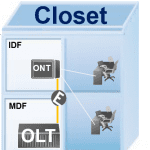
- Closet Optical LAN best replicates traditional LAN architectures as high-density Optical Network Terminals (ONT) directly replace workgroup switches inside the telecom closets (IDF) and the last 300’ CATx cabling is leveraged. The benefit of this architecture is that it provides a migration to deeper fiber architectures, you reuse existing horizontal copper cable drops and you immediately take advantage of Optical LAN’s centralized management.
- Deep Fiber
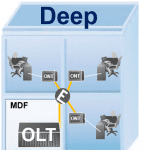
- Deep Fiber Optical LAN removes the switching equipment from the telecom closets (IDF) by positioning the ONTs as close to the end-device and end-user connectivity as possible. The benefit of this architecture is that you can fully realize all the great benefits of single mode fiber cabling, it has a better day-1 capital expense savings percentage and best year-over-year operational savings.
- Campus
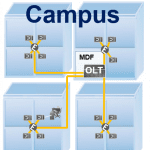
- Campus Optical LAN not only removes the switching equipment from the telecom closets (IDF), but it also removes switching equipment in the main data rooms (MDF) of the remote buildings served. The benefits of this architecture are that one Optical Line Terminal (OLT) can serve 1000s of Ethernet connectivity 12 miles away from one main data room in a virtual Ethernet port extension and software defined LAN environment.
- Secure
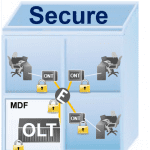
- Tellabs Protect infrastructure and asset protection is a method of providing alarmed, armored and 24/7/365 monitor fiber for the most highly secure networks. It is a means to satisfy Protected Distribution System (PDS) requirements, but its benefits are that there is no more need for encasing cables, it eliminates need for human visual inspection and the fiber cabling can run out of sight – thus, this architecture significantly lowers operational expenses.
- Tactical
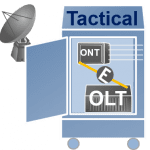
- Tactical Optical LAN takes advantage of the fact that the OLTs and ONTs can be environmentally hardened and secured in movable enclosures, thus you can take advantage of a highly mobile and reliable fiber-based communication system.
